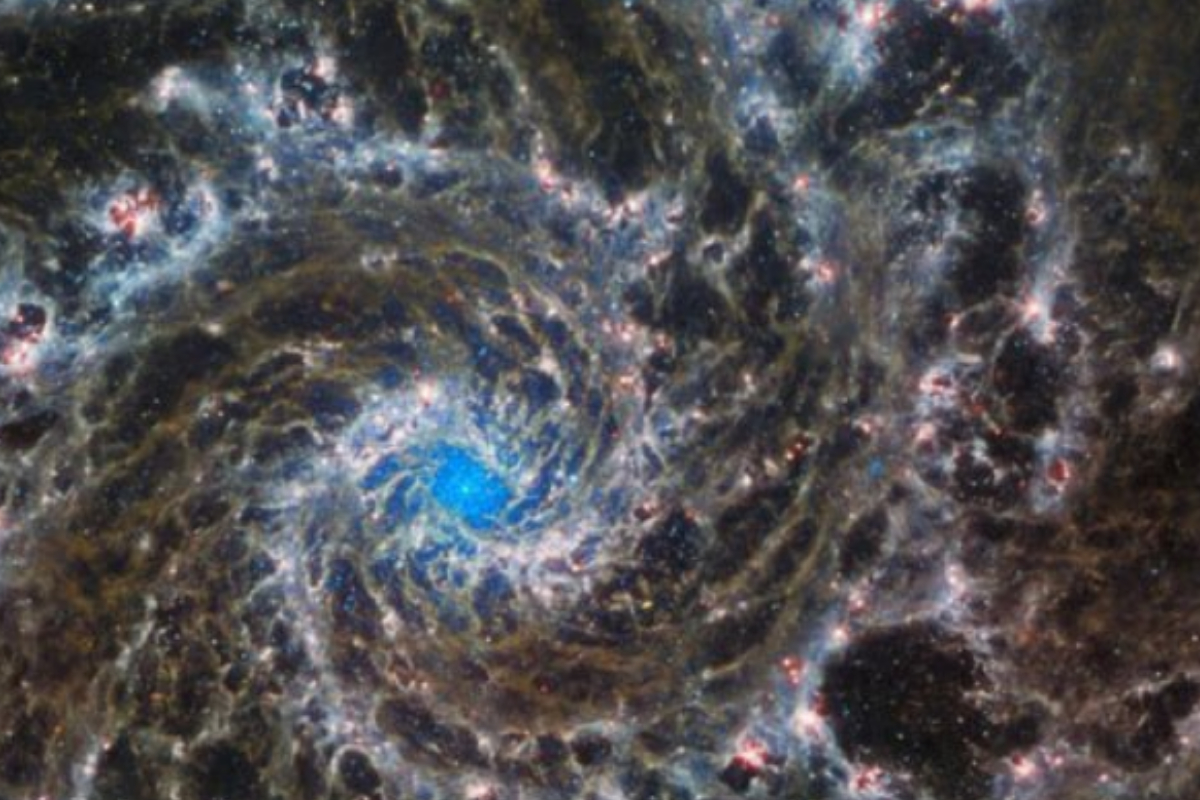- Spinning shape in the sky is called M74.
- Hubble telescope took pictures of M74 before.
- Its bright Centre was a soft yellow.
NASA and the European Space Agency released new picture. It has shown amazing new details of a part of the universe. This part of the universe is 32 million light-years away (ESA).
The infrared technology of the telescope, which was put into operation in December 2021, has given astronomers a better look at the so-called Phantom Galaxy than they have ever had before.
NASA and the ESA said Monday that Webb’s sharp vision has shown fine threads of gas and dust in the grandiose spiral arms that wind out from the centre of this image.
The agencies said in a statement that the lack of gas in the nuclear region makes it easy to see the nuclear star cluster at the centre of the galaxy.
The spinning shape in the sky is called M74 and is 32 million light-years from Earth. It is in the constellation Pisces.
The galaxy’s dust and stars are bright white, red, pink, and light blue. They swirl around a bright blue core, which is set against the dark background of deep space.
The Hubble telescope took pictures of M74 before. The pictures showed the galaxy’s spiralling blue and pink arms. But its bright centre was a soft yellow.
NASA and the European Space Agency (ESA) said that the Phantom Galaxy is a “favourite target for astronomers studying the origin and structure of galactic spirals.” The picture Webb took will help them “learn more about the earliest stages of star formation in the local universe” and record more information about 19 star-forming galaxies close to our own Milky Way.
Astronomers will also use the picture to “point out star-forming regions in galaxies, accurately measure the masses and ages of star clusters, and learn more about the nature of small dust particles floating through interstellar space,” according to a statement.
As the telescope orbits the Sun a million miles (1.6 million kilometres) from Earth, in a place called the second Lagrange point, the new pictures from Webb have excited the space community.
The telescope’s main mirror is more than 21 feet (6.5 metres) wide. It was made by NASA, the ESA, and the Canadian Space Agency working together. It is thought that it will work for about 20 years.
[embedpost slug=”apple-ceo-pledges-aid-for-pakistans-flood-relief/”]





















